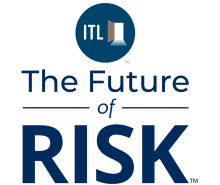Artificial intelligence (AI) continues to dominate conversations in the insurance industry. It is being used across the board from risk modeling to claims handling and promises faster insights, more accurate pricing and improved customer experiences.
But the truth is, no matter how advanced the model, AI is only as good as the data it’s trained on.
For insurers, the difference between an effective AI integration and one that falls short often comes down to a single factor: data quality.
Understanding the Role of Data in Insurance Industry AI Models
At its core, an AI model is a system that learns from past data to identify patterns and make more accurate predictions than traditional insurance algorithms. Over time, an AI model can simulate decision-making processes, flag anomalies, or suggest next best actions. For example, AI can help evaluate the likelihood of a claim going into litigation or estimate the cost of a payout.
Insurance organizations generate and manage large volumes of data. This includes structured data like policy details, claims histories, and property characteristics, as well as unstructured data such as adjuster notes, medical notes, and accident and property images.
This same data serves as the foundation for training AI models. But for these models to work as intended, they need to be trained on high-quality datasets.
The Risks of Incomplete or Inaccurate Data
If the data used to train an AI model is missing key variables or is inconsistent across records, the resulting outputs will be flawed. This can lead to underpricing risk, inaccurate claim predictions, or compliance issues. For instance:
- Incomplete data may cause the model to miss important risk factors
- Inaccurate data may result in unreliable predictions or pricing
- Biased data can unintentionally discriminate or underperform for certain populations
Insurance is a high-stakes, highly regulated environment. Data integrity influences not only outcomes but regulatory compliance and customer confidence. Therefore, when the data used in AI models is accurate, real-time, and comprehensive, the advantages of AI become far more obtainable.
Where Clean Data Drives the Most Value
Risk Management: AI helps insurers shift to more accurate predictive frameworks. When fueled by high-quality data, models can assess systemic or correlated risk across portfolios. This enhances catastrophe modeling and improves early warning systems.
Underwriting: Underwriters can leverage AI to rapidly analyze applicant profiles, identify hidden risk factors, and deliver more personalized pricing recommendations.
Claims: AI can improve claims management for both claimants and insurers by triaging claims more quickly, flagging inconsistencies, and even suggesting optimal resolution paths.
Compliance and Explainability: Regulators increasingly want to know not just what decisions were made but how insurers are making them. If the data trail is messy or undocumented, insurers will struggle to demonstrate fairness or explain the rationale behind automated outcomes.
Building the Right Data Foundations for AI Insurance Models
Clean data isn’t something that just happens. It requires effort and investment—from consistent data governance practices to systems that capture and store relevant and accurate data. It also means knowing when to look beyond your own walls.
Many carriers find that supplementing in-house data with anonymized, contributory industry data can expose their AI models to a broader set of scenarios and outcomes, improving accuracy across geographies and lines of business.
What If Your Organization Doesn’t Have Enough Quality Data?
One of the biggest challenges insurers face when adopting AI is realizing that their internal data, while valuable, is often not enough on its own. It may be limited in volume, skewed to specific geographies or products, or lack the historical depth needed to train robust models. Or there may be data quality issues such as missing fields that would undermine a model’s reliability. According to a recent Deloitte AI Institute report, nearly one third of companies surveyed say that data-related challenges are among the top barriers holding back their AI efforts.
To address these data issues, many insurers are starting to explore solutions such as:
Participating in de-identified industry data consortiums.
Supplementing internal data with licensed, external datasets
Partnering with organizations that curate and maintain high-integrity training sets
Investing in tools and governance practices that improve data quality upstream
By leveraging these approaches, insurers can gain access to large-scale, anonymized datasets that reflect a much broader range of underwriting scenarios and claims outcomes. Broader, cleaner datasets reduce blind spots, strengthen explainability, and support better predictions across lines of business and populations.
Looking Ahead
The power of AI in insurance lies not just in more efficient workflows, but in better predictive insight. And insight depends on quality input.
As the industry continues its current transformation, organizations that invest in strong data foundations will be better equipped to gain the full value of AI. Accurate algorithms matter. But the real power lies in clean, relevant, quality data.








